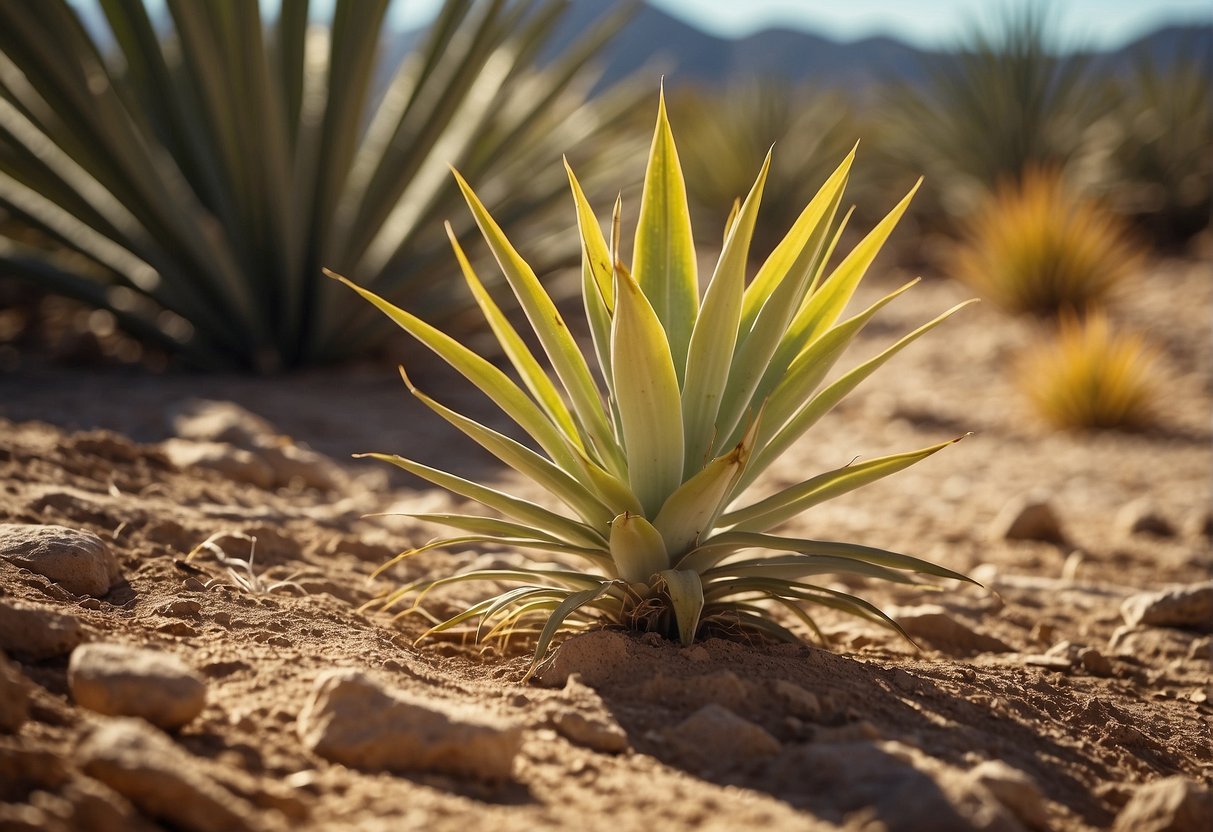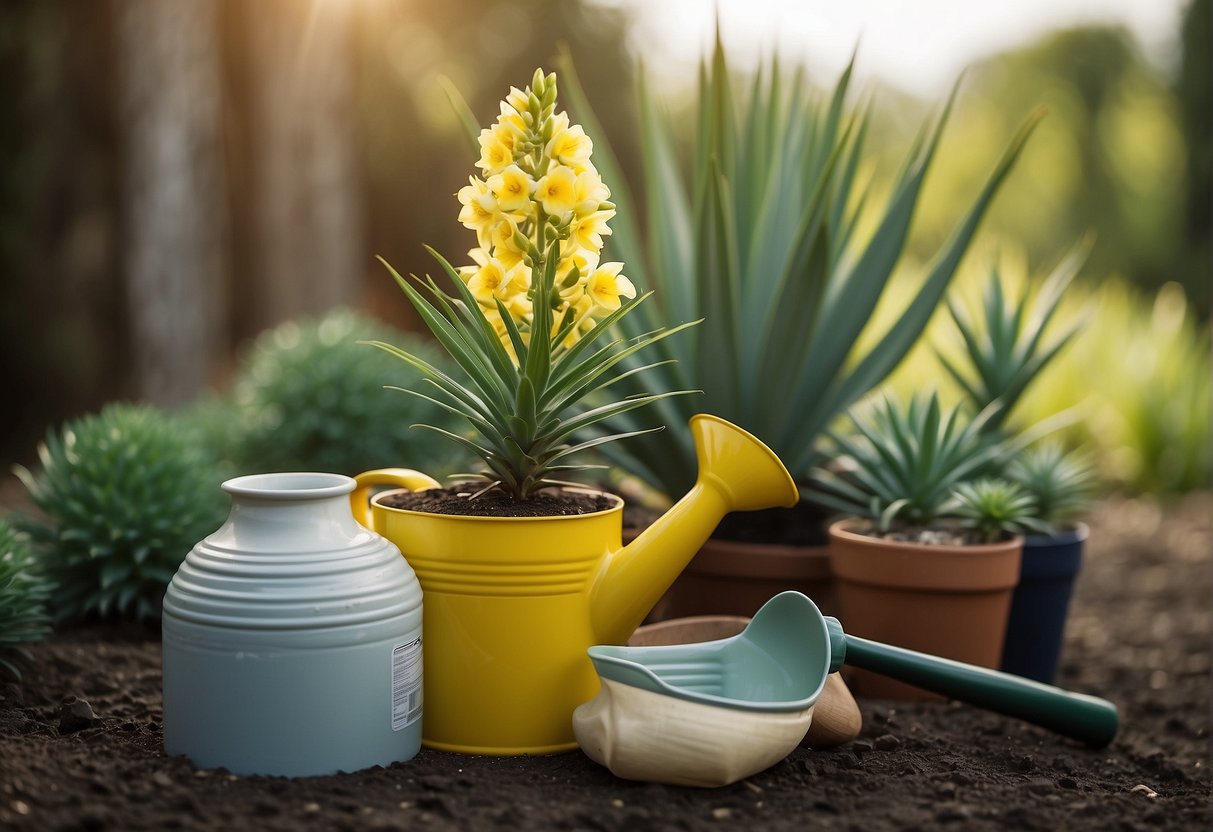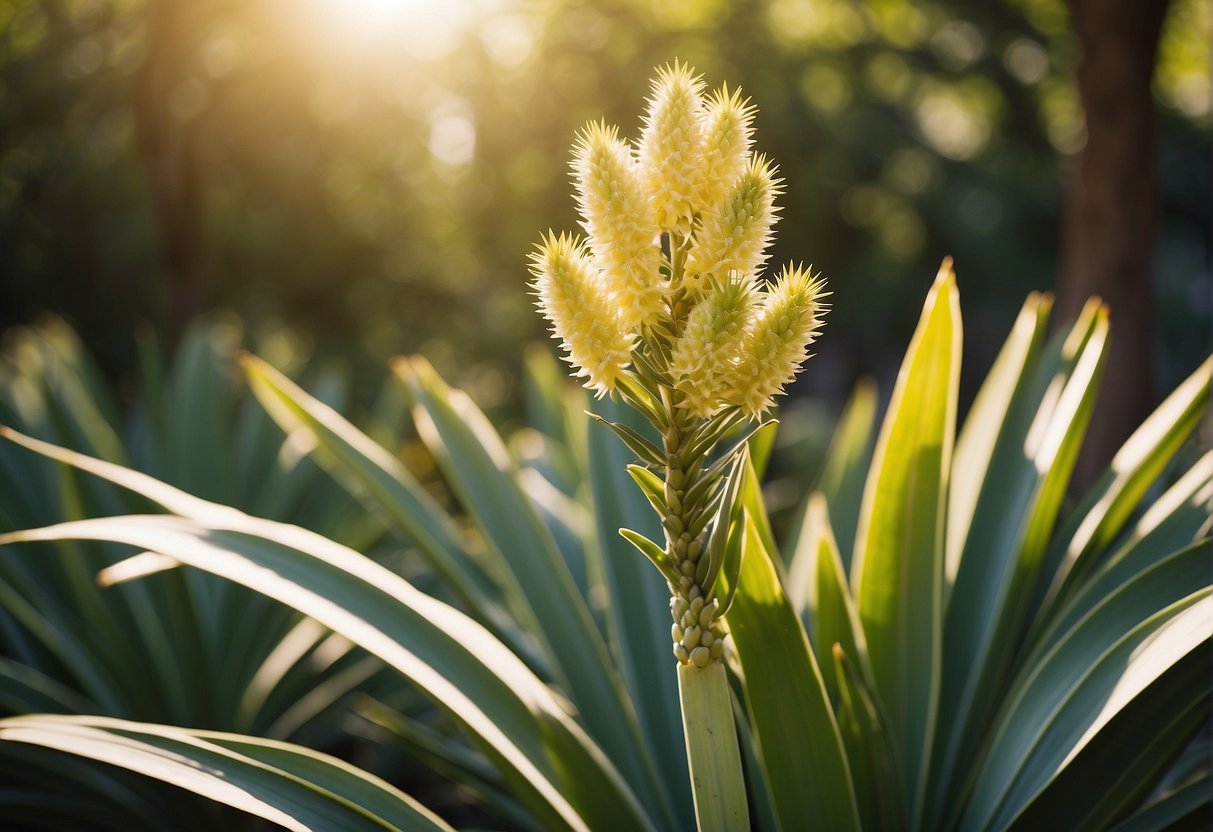Should you be an enthusiast of yucca plants, you might have observed that occasionally they develop a yellow color. This situation can be worrisome, particularly if the cause is unknown to you. Thankfully, there are a number of explanations for why yucca plants may become yellow, and the majority of these reasons are easily manageable.

One of the most common reasons why yucca plants turn yellow is due to overwatering. Yucca plants are native to arid regions, and they don’t need a lot of water to thrive. If you’re watering your yucca plant too frequently, or if it’s sitting in soil that doesn’t drain well, the roots can become waterlogged and start to rot. This can cause the leaves to turn yellow and eventually fall off.
Another reason why yucca plants might turn yellow is due to nutrient deficiencies. Yucca plants require certain nutrients, such as nitrogen, phosphorus, and potassium, to grow and stay healthy. If they’re not getting enough of these nutrients, the leaves can start to turn yellow. This is often accompanied by stunted growth and a general lack of vigor.
Understanding Yucca Plant Health
If you are a proud owner of a yucca plant, you know that it can be a beautiful and hardy addition to your home or garden. However, sometimes even the healthiest-looking yucca plants can start to turn yellow, indicating that something is wrong. In this section, we will explore some of the factors that can impact the health of your yucca plant.
Role of Watering and Soil Conditions
One of the most common reasons for yucca plants turning yellow is improper watering. Yucca plants prefer well-draining soil, so it is important to make sure that your plant is not sitting in water. Overwatering can lead to root rot, which can cause yellowing of the leaves. On the other hand, underwatering can also cause leaves to turn yellow and dry out.
To ensure that your yucca plant is getting the right amount of water, it is important to check the soil moisture regularly. You can do this by sticking your finger into the soil up to the second knuckle. If the soil feels dry, it is time to water your plant. However, if the soil feels wet or damp, you should wait a few more days before watering again.
Impact of Light and Sun Exposure
Another factor that can impact the health of your yucca plant is light and sun exposure. Yucca plants prefer bright, indirect light, but too much direct sunlight can cause the leaves to turn yellow and dry out. If your yucca plant is located in a spot that gets too much sun, you may need to move it to a shadier location.
Common Pests and Diseases
Finally, yucca plants can be susceptible to certain pests and diseases that can cause yellowing of the leaves. Fungal diseases, in particular, can be a problem for yucca plants, especially if the soil is too wet. To prevent fungal diseases, make sure that your plant is not sitting in water and that the soil is well-draining.
In addition, yucca plants can be affected by pests such as spider mites and mealybugs. If you notice any signs of pests or diseases on your plant, it is important to take action right away to prevent further damage.
By understanding the role of watering and soil conditions, the impact of light and sun exposure, and the common pests and diseases that can affect yucca plants, you can help ensure that your plant stays healthy and vibrant for years to come.
Preventive Measures and Remedies

Proper Yucca Plant Care Techniques
One of the best ways to prevent yucca plants from turning yellow is to ensure that they are receiving proper care. Here are some tips to keep in mind:
- Watering: Yucca plants are drought-resistant, so avoid overwatering them. Water them only when the soil is completely dry.
- Lighting: Yuccas prefer bright, indirect sunlight. Keep them near a south-facing window or in a well-lit room.
- Temperature: Yuccas can tolerate a wide range of temperatures, but they prefer temperatures between 60°F and 80°F.
- Soil: Use well-draining soil to prevent waterlogging, which can lead to root rot.
- Fertilizer: Yuccas do not require frequent fertilization. Use a balanced fertilizer once every six months during the growing season.
By following these care techniques, you can help prevent yellowing leaves in your yucca plant.
Treatment of Yellowing Leaves
If your yucca plant has already started to turn yellow, there are a few remedies you can try:
- Pruning: Remove any yellow or brown leaves with a sharp, clean pair of scissors. This will help redirect the plant’s energy to healthy leaves.
- Neem oil: Neem oil is a natural insecticide that can help control pest infestations, which can cause yellowing leaves. Mix neem oil with water and spray it on the plant.
- Fungicide: If your yucca plant is suffering from a fungal infection, use a fungicide to treat the leaves. Follow the instructions on the label carefully.
- Nutrient deficiencies: Yellowing leaves can also be caused by nutrient deficiencies. If you suspect this is the case, use a balanced fertilizer to provide the necessary nutrients.
By taking these steps, you can help treat yellowing leaves in your yucca plant and prevent further damage.
Frequently Asked Questions

What causes discoloration in yucca plant leaves?
Discoloration in yucca plant leaves can be caused by a variety of factors, including overwatering, underwatering, nutrient deficiencies, and pests. The most common cause of yellowing leaves in yucca plants is overwatering, which can lead to root rot and other issues.
Can yellow leaves on a yucca plant be a sign of disease?
Yellow leaves on a yucca plant can be a sign of disease, but they can also be caused by other factors, such as overwatering or nutrient deficiencies. It’s important to examine the plant closely to determine the cause of the yellowing leaves.
How should you care for a yucca plant during the winter to prevent yellowing?
During the winter, yucca plants should be kept in a cool, dry location with bright, indirect light. Watering should be reduced to prevent overwatering, which can lead to root rot and yellowing leaves. It’s also important to avoid exposing the plant to cold drafts or sudden temperature changes.
What are the signs of overwatering in yucca plants?
Signs of overwatering in yucca plants include yellowing leaves, wilting, and root rot. The soil may also be wet or waterlogged, and the plant may have a sour or musty odor.
Is it necessary to remove yellow leaves from yucca plants?
It is not always necessary to remove yellow leaves from yucca plants, as they may still be able to photosynthesize and produce energy for the plant. However, if the yellowing leaves are unsightly or if the plant is severely affected, it may be necessary to remove them.
How can yellowing of yucca leaves be treated or reversed?
The treatment for yellowing yucca leaves depends on the cause of the problem. If the cause is overwatering, the plant should be allowed to dry out and watering should be reduced. If the cause is a nutrient deficiency, the plant may need to be fertilized. If the cause is a pest infestation, the plant may need to be treated with an appropriate pesticide.














